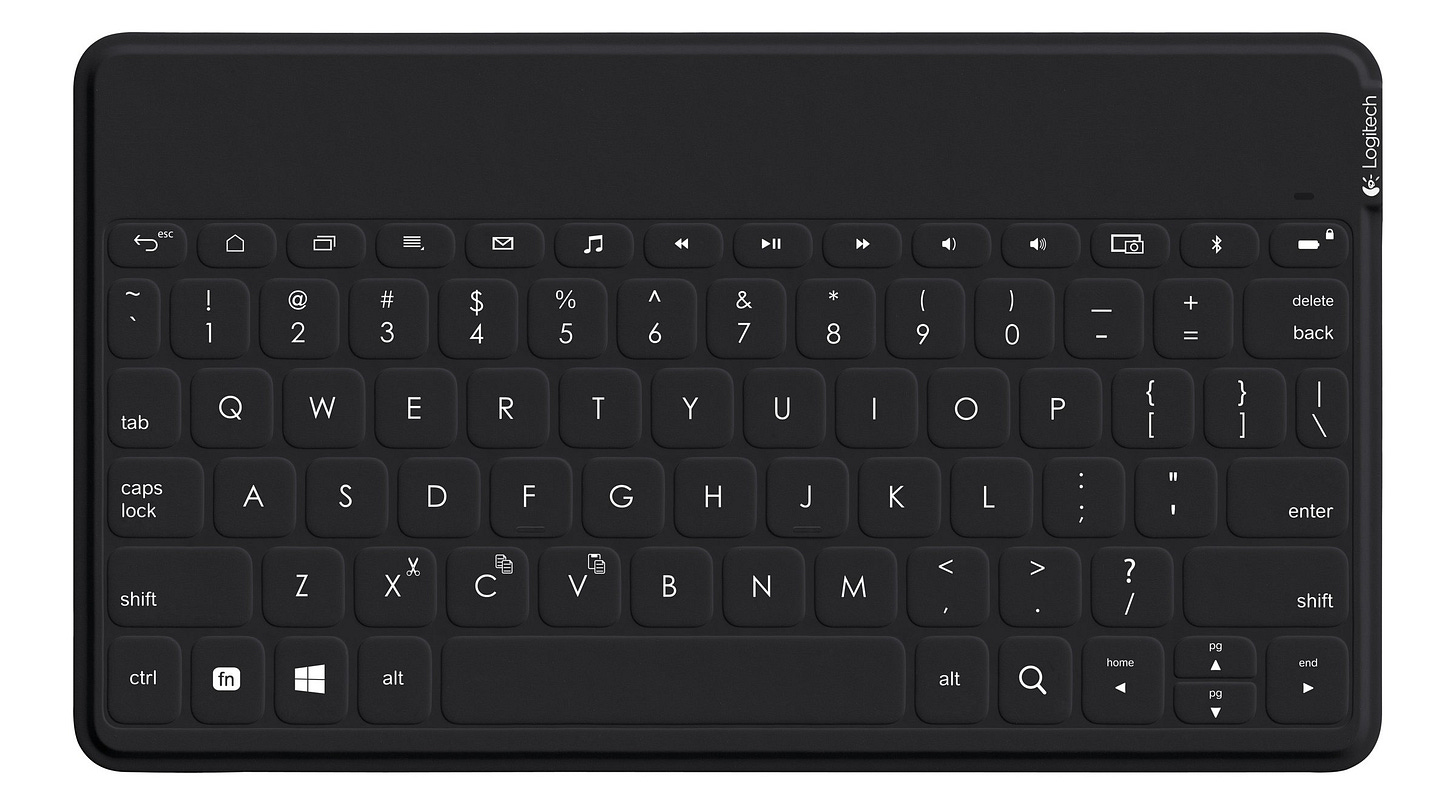My kids love to “work.” Anytime my wife or I sit down at our computers, they think it’s time for us to take a break while they take over. We usually open up a blank document and let them go at it, typing away for a few minutes.
I’ve tried to channel this fascination with banging on the keyboard into something productive for our four-year-old. I hook up my Keys-To-Go (which has amazingly lasted more than 10 years) and open a learn-to-type app on his iPad.
I’ve had mixed success with this, but it got me thinking: why in the world are we still using keyboards?
If my kids stick with typing, they’ll be the fourth generation in our family to use a keyboard. Their great-grandmother typed professionally, starting on a typewriter before transitioning to a computer. But here’s the thing—70 years have passed, and the QWERTY keyboard hasn’t seen any significant disruption.
Sure, the places where typed words appear have evolved—from paper to TVs, from clunky low-res computer screens to modern tablets. Yet, one of Apple’s main accessories for the iPad is still a $350 keyboard. So why hasn’t a better solution replaced it?
What’s the alternative?
I don’t have a magical answer, but here are a few possibilities that could eventually replace our keyboards.
1. Voice
Talking to Siri in public or at the office still feels awkward, but with more people working from home, voice could take over more of our tasks as AI assistants get better at understanding and executing commands.
Just this week, Claude released a new model for computer operations. Combined with ChatGPT’s powerful voice mode, it’s not hard to imagine a future where keyboards become nearly obsolete.
Non-Invasive Neural Interfaces
This is a newer, less-known option, but at this year’s Meta Connect, Meta demoed an impressive “neural interface” in the form of a wristband. It’s designed to work with their Orion Glasses, tracking electrical signals and muscle movements to figure out what the user is trying to do.
From what I’ve read, it works very well and seems to outperform the current hand-tracking technology used by devices like Apple’s Vision Pro and Meta’s Quest. You can read more about it here.
Neuralink
computers with our minds. While the early demos were impressive, it’ll take more than smooth mouse movements to convince people to implant something in their heads.
Still, after decades of proving its safety and usefulness, I can see a future where some people adopt it.
Keyboards have had a good run, but technology is always evolving. Whether through voice, neural interfaces, or even something we haven’t thought of yet, surely we won’t be using keyboards another 70 years from now.





Good one; do you know the QWERTY legacy where it is intentionally suboptimal for touch typists because the original-whatever (typewriter?) couldn’t keep up with a more optimal letter layout? Speech will be huge at least in certain scenarios and tomorrow I’m dropping a bit that demystifies how that all works